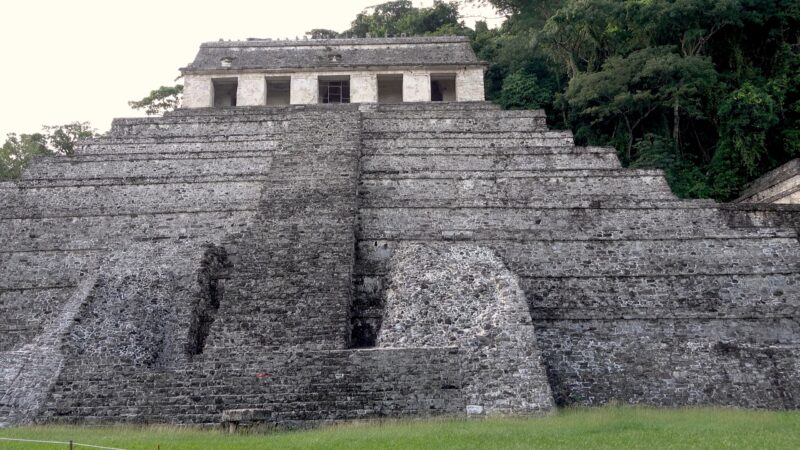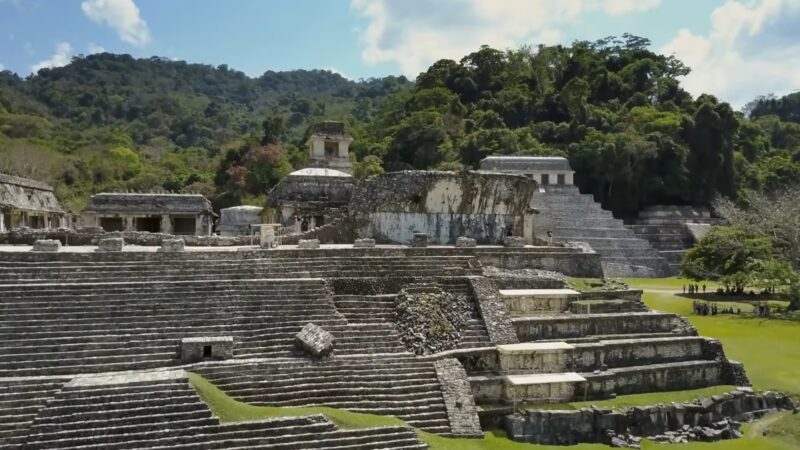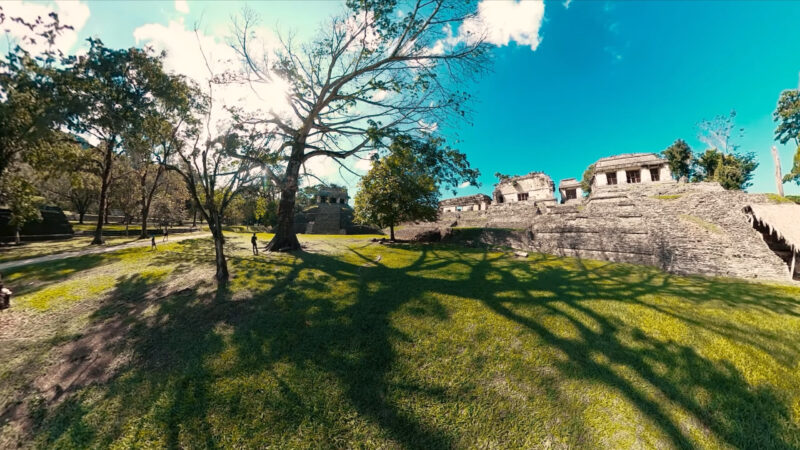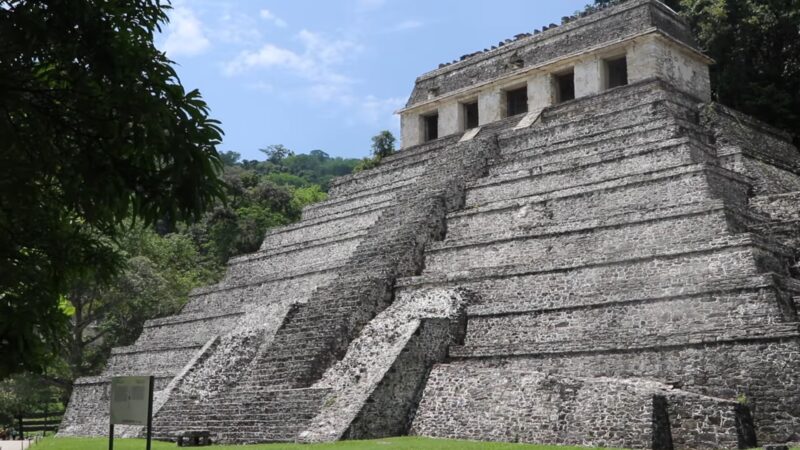Palenque, a name resonating through the corridors of history, primarily refers to the archaeological site in Chiapas, Mexico, known for its Mayan ruins. The term “Palenque” also extends beyond this, encompassing various meanings and interpretations throughout history. This article delves into the multifaceted nature of the name “Palenque,” exploring its origins, historical significance, cultural impact, and more.
Origins of the Name
The name “Palenque” is believed to have originated from Spanish settlers. However, its roots can be traced back to the local Ch’ol Maya language. The ancient Mayans referred to this city as “Lakamha,” which translates to “Big Water.”
This name likely referenced the abundant water sources near the site, such as the Otulum River. The Spanish, upon their arrival, named the site “Palenque,” a word with several meanings in Spanish, including “palisade” or “fortification.” This name might have been inspired by the site’s fortified appearance or perhaps the wooden stakes found in the area.
Historical Significance of Palenque
Palenque holds immense historical significance, particularly in the context of Mayan civilization. The site flourished during the 7th century under the reign of Pakal the Great, a notable Mayan ruler. The architecture, art, and hieroglyphs found at Palenque have provided invaluable insights into Mayan culture, politics, and astronomy.
Notably, the Temple of the Inscriptions, which serves as Pakal’s tomb, is a testament to the sophistication of Mayan architecture and their understanding of celestial movements.
Architectural Marvels and Artistic Achievements

The ruins of Palenque are renowned for their architectural and artistic achievements. The site features a unique blend of Maya and Olmec influences, evident in the intricate bas-relief carvings and the sophisticated use of corbel arches.
Structures like the Palace and the Temple of the Cross Complex showcase the advanced urban planning and construction techniques of the Maya. The art found in Palenque, from sculptures to murals, reflects the deep spiritual and ritualistic practices of the Mayans.
Cultural and Mythological Connections
Palenque’s name is deeply intertwined with Mayan mythology and culture. The site is thought to be connected to the Mayan myth of the Three Hearthstones and the creation of the universe. It also features prominently in the Popol Vuh, a sacred Mayan text, which narrates the story of the Hero Twins and their journey through the underworld.
The name “Palenque” itself has become synonymous with the mysteries and grandeur of the Mayan civilization, symbolizing their rich heritage and advanced knowledge.
Impact on Modern Understanding of Mayans
The exploration and study of Palenque have significantly impacted our understanding of Mayan civilization. The hieroglyphic inscriptions found at the site have been crucial in deciphering the Mayan script, unlocking stories about their history, politics, and society.
Palenque has challenged many preconceived notions about the Mayans, revealing a civilization that was both complex and advanced in various fields such as astronomy, mathematics, and architecture.
Palenque in Contemporary Context

Today, Palenque serves as a vital link between the past and present. It is not only a UNESCO World Heritage site but also a symbol of cultural pride for Mexico and the indigenous Maya people.
The name “Palenque” continues to inspire fascination and reverence, attracting scholars, tourists, and history enthusiasts from around the world. Its legacy lives on, reminding us of the rich tapestry of human civilization and our continuous quest to understand our past.
In conclusion, the name “Palenque” embodies much more than just a physical location. It represents a rich cultural and historical narrative, spanning centuries and encompassing various facets of Mayan life.
From its linguistic roots to its modern-day significance, the name “Palenque” stands as a testament to the enduring legacy of the Mayan civilization, inviting us to explore and appreciate one of the most fascinating chapters in human history.
Palenque’s Influence on Archaeology and Research
The archaeological site of Palenque has been a pivotal point for research in Mesoamerican studies. Its discovery and subsequent excavations have opened new avenues in understanding Mayan civilization.
Archaeologists have unearthed evidence of advanced urban planning, unique burial customs, and complex socio-political structures. The ongoing study of Palenque continues to reveal new information, challenging and enriching our understanding of the ancient Maya.
Palenque’s Role in Deciphering Mayan Script
Palenque has played a critical role in deciphering the Mayan script, a complex system of hieroglyphs that was once a mystery to scholars. The inscriptions found at Palenque have been instrumental in this process.
Researchers have been able to piece together aspects of Mayan history, calendar systems, and royal lineages through these inscriptions. The Temple of the Inscriptions, in particular, has been a goldmine for understanding Mayan written language.
Environmental and Geographical Aspects
The geographical location and environment of Palenque have significantly influenced its development and the lifestyle of its inhabitants. Nestled in the lush, tropical rainforest of Chiapas, Palenque’s natural setting provided abundant resources and influenced the Mayan’s agricultural practices.
The proximity to rivers and the natural terrain played a critical role in the city’s layout and architecture. Understanding these environmental aspects helps us appreciate how the ancient Maya interacted with and adapted to their natural surroundings.
Palenque in Literature and Popular Culture
The allure of Palenque extends into literature and popular culture. It has inspired numerous works of fiction, documentaries, and scholarly writings. Palenque’s mysterious aura and its rich historical background have made it a favorite subject for writers and filmmakers, often portrayed as a symbol of ancient wisdom and lost civilizations.
This cultural representation has played a part in shaping public perception and awareness of Mayan history and archaeology.
Tourism and Preservation Efforts

Palenque is a major tourist attraction, drawing visitors from around the globe. This influx of tourism, while beneficial economically, poses challenges for the preservation of the site. Efforts have been made to balance tourism with conservation, ensuring that Palenque remains intact for future generations to study and admire.
The Mexican government, along with international organizations, continues to work on preserving this historical treasure, highlighting the importance of safeguarding our world heritage.
Future Research and Unanswered Questions
Despite extensive studies, Palenque still holds many unanswered questions. Future archaeological excavations and research are expected to unravel more secrets of this ancient city.
Areas like the understanding of the daily life of its inhabitants, the full extent of the city’s influence in the region, and deeper insights into their religious practices remain fertile ground for exploration. The ongoing research at Palenque not only adds to our historical knowledge but also inspires a sense of wonder about the achievements of the Maya civilization.
FAQs
Final Words
In summary, the name “Palenque” encapsulates a rich tapestry of history, culture, and mystery. From its origins as a Mayan city-state to its current status as a symbol of ancient wisdom, Palenque continues to fascinate and educate.
As we delve deeper into its past, we gain not only knowledge about the Maya but also a greater appreciation for the complexities of human history. Palenque stands as a beacon of the past, inviting us to explore, learn, and wonder.

